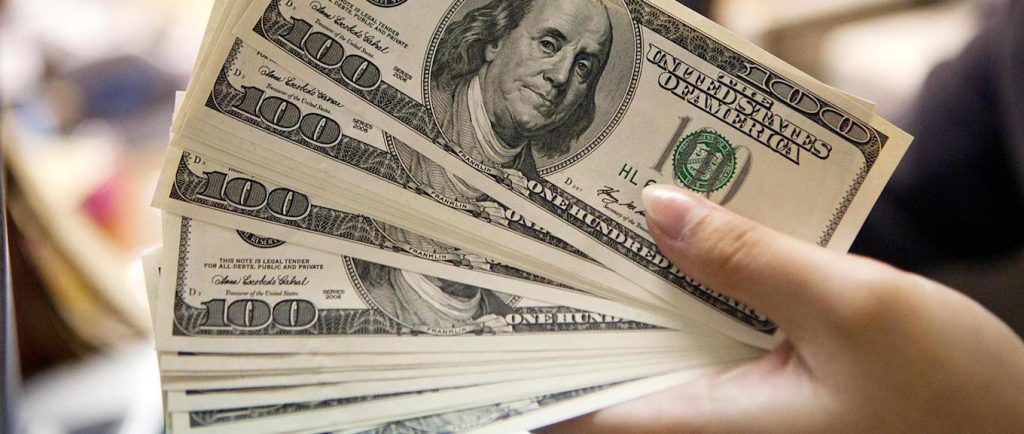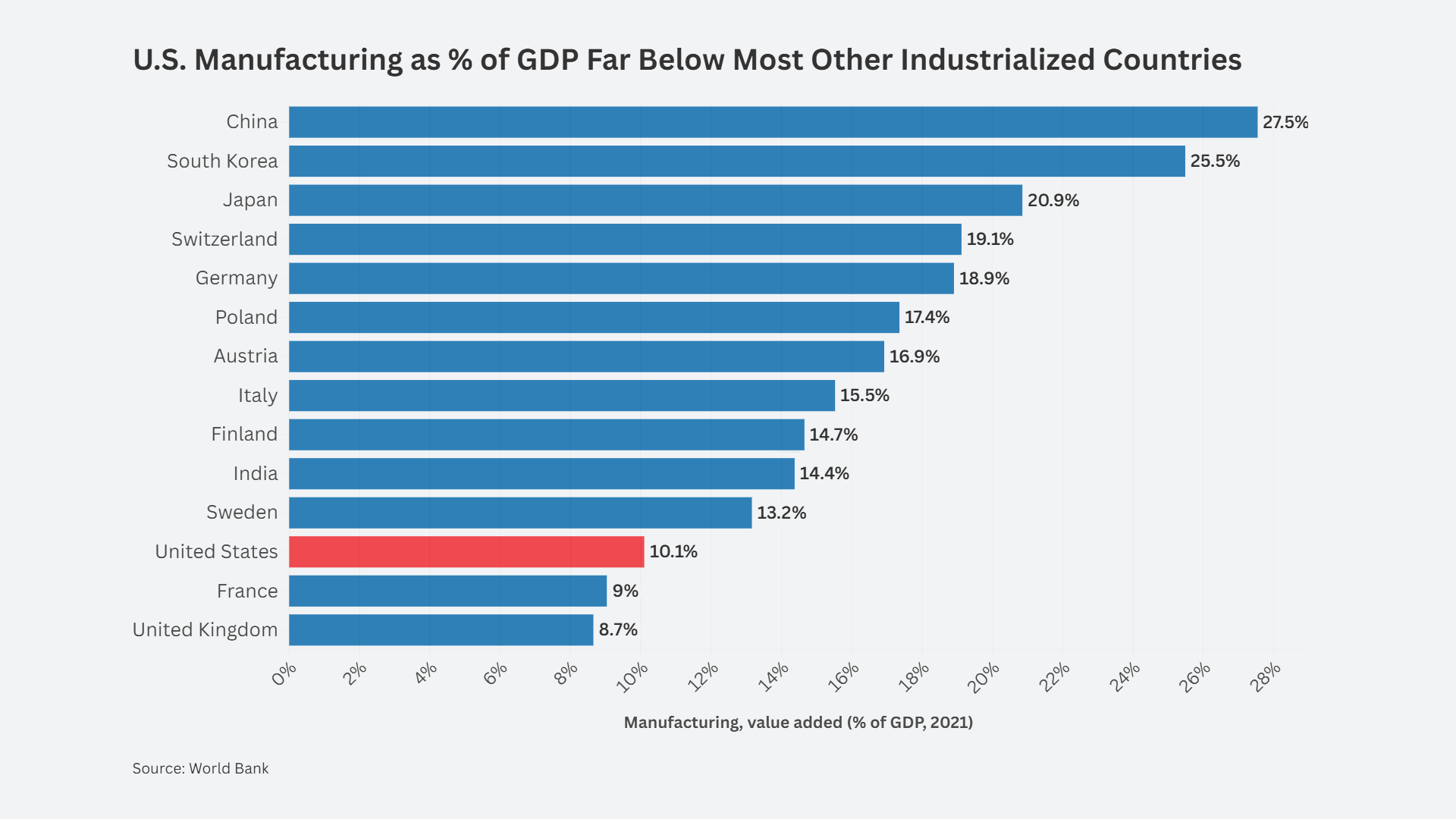CDJPA Research Note #1
By John R. Hansen (CPA Advisory Board) and Jeff Ferry (CPA Research Director)
Implementation of the Competitive Dollar for Jobs and Prosperity Act (CDJP Act) will gently lower the dollar’s value to a competitive exchange rate and keep it competitive over time. The Act provides the Federal Reserve with a new mandate to achieve a current account balance. The Fed would utilize a market access charge (MAC), a charge on incoming capital purchasing dollar denominated assets, to achieve this goal.
Economic analysis shows that a dollar depreciation of 20-25 percent will be required to balance the US current account. This can be achieved via a targeted depreciation of about 4 percent a year, leading to a cumulative depreciation of 20 percent in about five years. Addressing overvaluation automatically addresses the undervaluation of the currencies of trade surplus countries.
Economic Analysis
Our estimates are based on published analysis by the International Monetary Fund (IMF) and the Peterson Institute for International Economics (PIIE), two highly respected organizations that follow international financial and currency developments. Staff of the IMF and the (PIIE) review currency values every six months. Based on country-specific and global trends, they find exchange rates that simultaneously balance trade for 34 major trading countries including the US.
Both the IMF and the PIIE assume that, if any country’s current account surplus or deficit is three percent of GDP or less, it is “balanced.” However, accepting the deficit of around three percent forecast for the United States by 2022 would mean accepting the needless permanent unemployment of three to four million Americans. Therefore, the CPA uses an algorithm provided by the PIIE to calculate the dollar depreciation required to bring America’s current account to absolute or true-zero balance.
Impacts
A gradual dollar depreciation of 20-25 percent would have a powerful effect on all productive sectors of the US economy, including those that compete with imports at home and export sectors that compete with foreign-made products. The depreciation cuts the price of our goods in foreign currency, so our producers can maintain current dollar prices and be 20-25 percent more competitive when competing against foreign-made goods. Alternatively, they can increase their profits by raising dollar prices by up to 25 percent and still remain competitive. These benefits will be felt throughout the US supply chain. It provides a powerful incentive for American producers to use American labor and American-made raw materials and intermediate products. The benefits will also be felt by farmers and the entire agricultural sector, where US-grown produce will be 20-25 percent more competitive.
Further, the CDJP Act will produce a competitively-valued dollar and a more stable, predictable dollar. Since the collapse of the fixed exchange rate Bretton Woods regime in the early 1970s, the dollar value has been subject to volatile, unpredictable movements. In the February-May period of this year alone, the dollar has appreciated by 6%, making international competition more difficult for American producers. While financial market participants attribute this sudden move in the dollar to expectations of faster US economic growth (and slower growth in other countries), it was not widely expected and business had no way to plan for such a negative development. The CDJP Act will empower the Federal Reserve to manage a regime in which the dollar moves towards a competitive level and remains there, enabling business to better plan for the future. This should support US exports and investment, two key ingredients for better US growth and employment.
Flexibility, stability and predictability
If the United States were to raise its productivity growth or reduce its rate of inflation relative to other countries over the next five years, the dollar depreciation required to balance U.S. trade would drop accordingly. Conversely, if America’s productivity growth rate were to fall behind or if its rate of inflation were to rise above the rates in other countries, the required dollar depreciation to balance U.S. trade would be greater than 20-25 percent. Because the actual devaluation required for balance may be higher or lower than currently projected, it is critically important that any mechanism established to move the dollar towards its trade-balancing equilibrium exchange rate be designed to adjust dynamically to what actually happens, moving the dollar’s exchange rate faster or slower as required. The CDJP Act achieves this by charging the Federal Reserve with responsibility to manage the Market Access Charge, adjusting the rate to the appropriate value based on its economic analysis of current and projected trends in international prices, exchange rates, US exports and imports.













